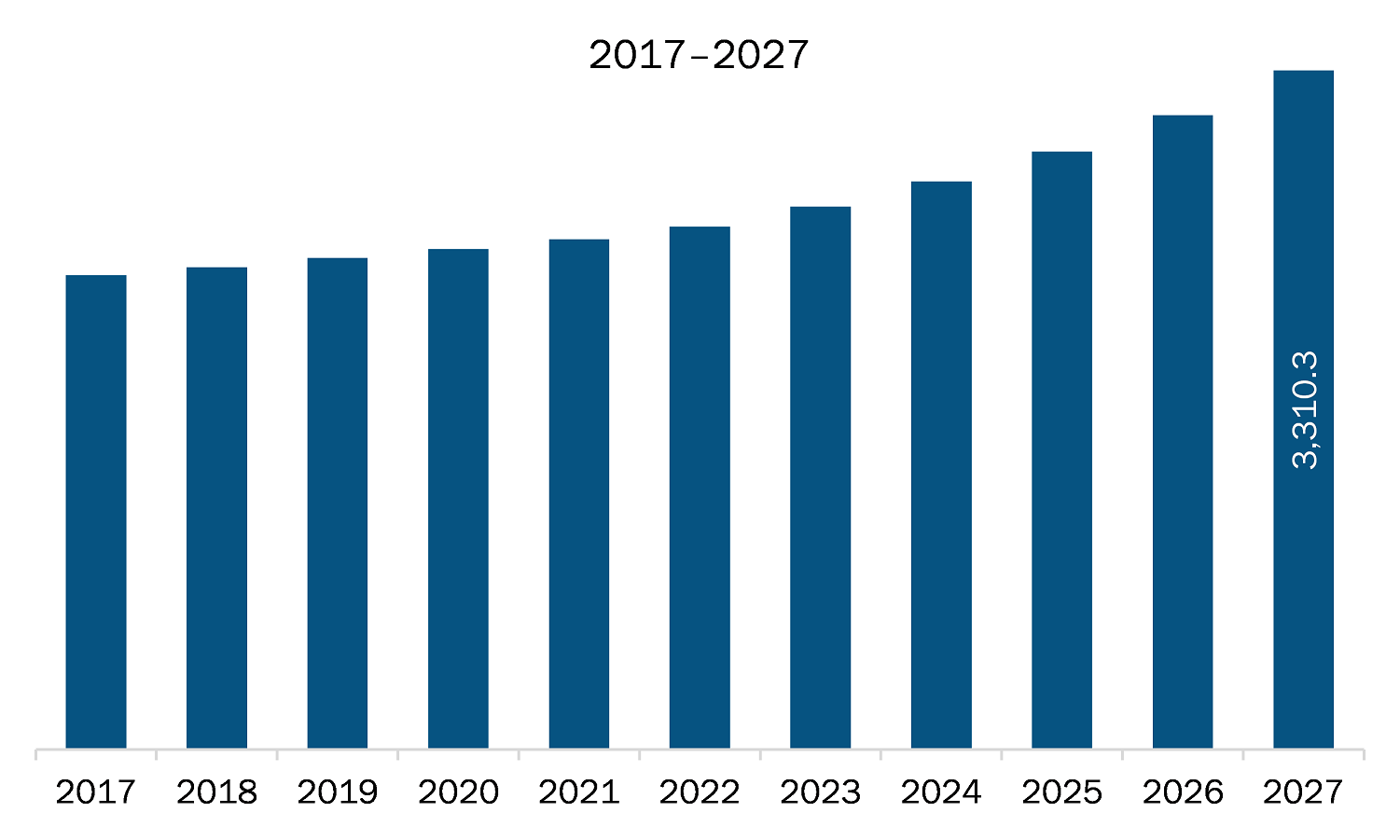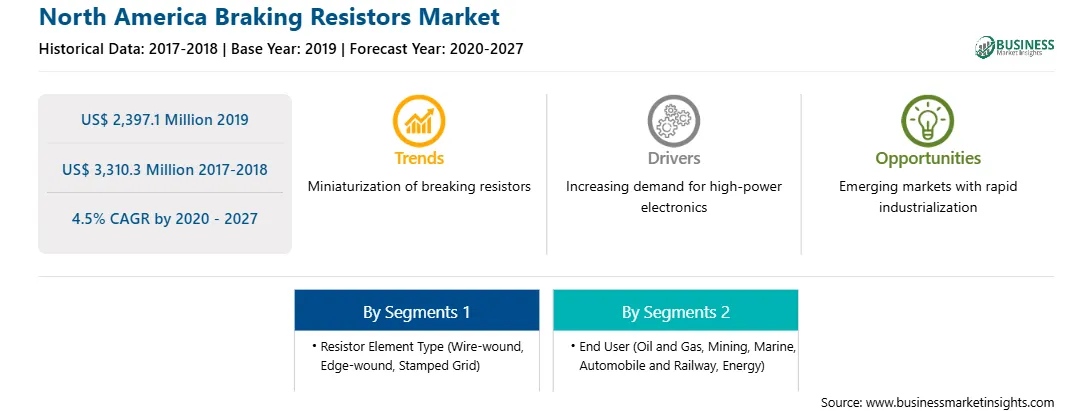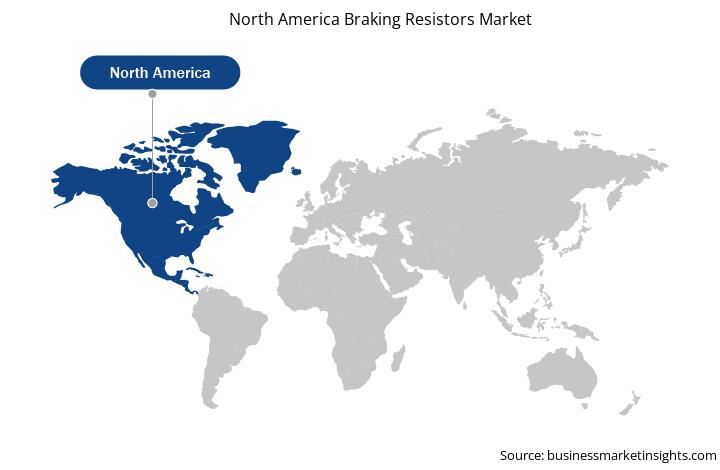A braking resistors or dynamic braking resistors (DBR's) work as alternative current (AC) variable frequency drives (VFDs) to disintegrate energy generated in the motor with the help of braking torque applied to stop the engine. This resistors has its application in the DC bus, which requires a voltage of around 800 volts when the braking conditions are applied. Dynamic braking resistors are used in DC drive systems and inverters, and also used as the electric traction motors in the railroad vehicle as generators while slowing down the locomotive. This dynamic resistors is also known as "rheostatic," as it generates electrical power, which is regenerative if the power is returned to the supply line and dissipated as heat in brake grid resistors. This resistors generates a braking torque and absorbs the extra energy generated at the time of stopping the electric motors. These resistors have their application across variable-speed drive systems such as cranes, elevators, and trains. Also, new energy and power projects witnessing investment rise is expected to create a significant demand for braking resistors in the coming years, which is further anticipated to drive the North America braking resistors market.
North America is adversely affected by the COVID-19 outbreak. The US is the worst-hit country in North America. The continuous growth in the number of confirmed cases has led the government to impose lockdown across the nation’s borders. Majority of the manufacturing plants are closed. Municipalities are functioning slowly as compared to past; also, the electronic & semiconductor and automotive industries are at a halt, which is hindering the braking resistors market. In terms of patient count and death toll, Canada and Mexico are still at a nascent stage than the US. The outbreak would have a limited short-term impact on the market in the coming months. The short-term effect of the crisis would not affect the recovery of overall sales in the electronics & semiconductor industry in the next few quarters owing to the mounting requirement of fuel-efficient vehicles by various companies in the region.

Strategic insights for the North America Braking Resistors provides data-driven analysis of the industry landscape, including current trends, key players, and regional nuances. These insights offer actionable recommendations, enabling readers to differentiate themselves from competitors by identifying untapped segments or developing unique value propositions. Leveraging data analytics, these insights help industry players anticipate the market shifts, whether investors, manufacturers, or other stakeholders. A future-oriented perspective is essential, helping stakeholders anticipate market shifts and position themselves for long-term success in this dynamic region. Ultimately, effective strategic insights empower readers to make informed decisions that drive profitability and achieve their business objectives within the market.

| Report Attribute | Details |
|---|---|
| Market size in 2019 | US$ 2,397.1 Million |
| Market Size by 2027 | US$ 3,310.3 Million |
| Global CAGR (2020 - 2027) | 4.5% |
| Historical Data | 2017-2018 |
| Forecast period | 2020-2027 |
| Segments Covered |
By Resistor Element Type
|
| Regions and Countries Covered | North America
|
| Market leaders and key company profiles |
The geographic scope of the North America Braking Resistors refers to the specific areas in which a business operates and competes. Understanding local distinctions, such as diverse consumer preferences (e.g., demand for specific plug types or battery backup durations), varying economic conditions, and regulatory environments, is crucial for tailoring strategies to specific markets. Businesses can expand their reach by identifying underserved areas or adapting their offerings to meet local demands. A clear market focus allows for more effective resource allocation, targeted marketing campaigns, and better positioning against local competitors, ultimately driving growth in those targeted areas.

The braking resistors market in North America is expected to grow from US$ 2,397.1 million in 2019 to US$ 3,310.3 million by 2027; it is estimated to grow at a CAGR of 4.5% from 2020 to 2027. Infrastructure-driven growth in countries such as US has resulted in high economic growth and increased the demand for commodities such as iron ore, coal, manganese, cobalt, and copper. The exploration activities for necessary minerals and metals are vital for the overall growth of the mining industry. For instance, gold mines in US are expected to draw attention for more mining activities. To continue with mining activities, appropriate equipment will be necessary for greater productivity while ensuring a low risk of fatalities. The application of cranes, heavy mining machines, conveyors, and mining shaft elevators, among others, plays a vital role in handling the overall operation in the mines efficiently. Therefore, the increasing application of these industrial machineries and the constant growth in the mining sector are demanding the integration of braking resistors. These braking resistors are used to control the speed of these industrial machines for an efficient workflow. This creates a massive opportunity for the braking resistors manufacturers to develop advanced products and meet the emerging requirement of the customers.
In terms of resistor element type, the wire-wound segment accounted for the largest share of the North America braking resistors market in 2019. Further, the automobile and railways segment held a substantial share of the North America braking resistors market based on end user in 2019.
A few major primary and secondary sources referred to for preparing this report on the braking resistors market in North America are company websites, annual reports, financial reports, national government documents, and statistical database, among others. Major companies listed in the report are ABB; Bonitron, Inc; REO AG; Sandvik AB; Schneider Electric; Toshiba International Corporation; Vishay Intertechnology, Inc.; Yaskawa Electric Corporation.
The North America Braking Resistors Market is valued at US$ 2,397.1 Million in 2019, it is projected to reach US$ 3,310.3 Million by 2027.
As per our report North America Braking Resistors Market, the market size is valued at US$ 2,397.1 Million in 2019, projecting it to reach US$ 3,310.3 Million by 2027. This translates to a CAGR of approximately 4.5% during the forecast period.
The North America Braking Resistors Market report typically cover these key segments-
The historic period, base year, and forecast period can vary slightly depending on the specific market research report. However, for the North America Braking Resistors Market report:
The North America Braking Resistors Market is populated by several key players, each contributing to its growth and innovation. Some of the major players include:
The North America Braking Resistors Market report is valuable for diverse stakeholders, including:
Essentially, anyone involved in or considering involvement in the North America Braking Resistors Market value chain can benefit from the information contained in a comprehensive market report.